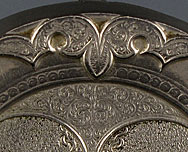Metal Ribbon
Name assigned based on exterior decoration
No example of this needle case has been found to date and it is unknown whether it was actually produced. If you have this needle
case in your possession or know of someone who has it, please contact us so that photographs of it can be
obtained and added to the this website.
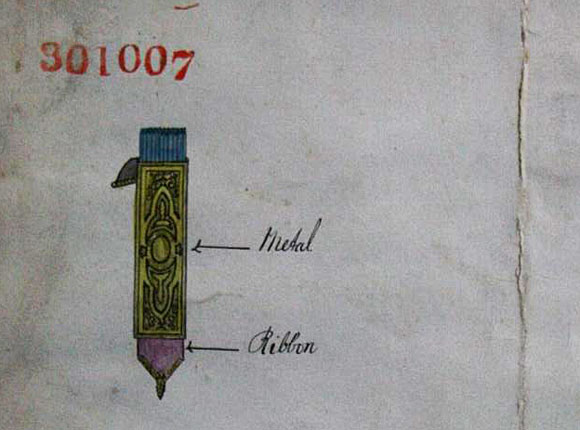
Design Representation
Design Details
Needle Case Type: |
Flat-Names |
Patent/Registered to: |
Albert Fenton - Birmingham |
Patent/Design Representation #: |
Ornamental Class 1 – Metal: #301007 |
Patent/Design Registration Date: |
June 2, 1876 |
Location of Patent/Design Registration: |
The National Archives (TNA) - Kew, UK |
Reference #: |
TNA Representation - BT 43/40/301007
TNA Register - BT 44/3/301007 |
Dimensions: |
Unknown |
Material: |
Unknown |
Name Variations: |
Unknown |
Other Variations: |
Unknown |
Brass
Brass is an alloy of copper and zinc. Many properties make brass appealing, including its brilliant yellow color which resembles gold but
without gold’s costliness; its strength, for brass is stronger and harder than copper; its malleability, which makes it easy to work; and its
resistance to corrosion. The percentage of copper determines the quality of the brass. Blends of 80% copper and 20% zinc create the
finest brass, the kind that wouldn’t crack, the kind most likely used to create brass needle cases. Some needle cases are, however reddish in
color which indicates they had less zinc, perhaps only 15%. Occasionally 12-20% of nickel was added to give the brass a silver appearance -
this was called ‘nickel silver’. Pictured below is a detail of a needle case made of brass. Click on the photo to visit the webpage for
this needle case and see the same item made of nickel-silver.
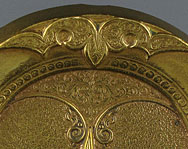
Gilt
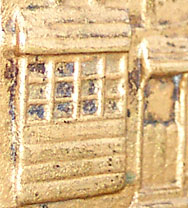
Gilt was used during the Victoria Era to give objects the appearance of gold. Gold plating was not as popular because it was less
durability since the thin layer of gold oxidized and wore off quickly. As a result, manufacturers preferred gilding which involved mixing gold
powder with mercury to form a paste that was applied to the item. Heating then caused the mercury to evaporate leaving the gold powder adhered
to the surface. Thickly applied gilt occasionaly conceals the fine detail of a design, and as an item ages, portions of the gilt deteriorates
and oxidation causes parts of the brass to discolor leaving the item spotty and unattractive. The detailed photo above shows an item with heavy
gilding, whereas the photo below shows the same detail after the heavy gilt was removed. Click on the photo to visit the webpage for this
needle case.
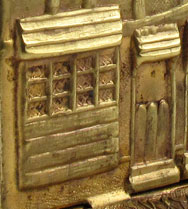
Nickel-Silver
Nickel-silver is an alloy of copper, zinc and nickel. The most common formula is 60% copper, 20% nickel and 20% zinc. Nickel-silver
was originally developed in China and the alloy was exported to Europe during the 17th century. German imitations began to appear around 1750
and in 1823 a competition was held in Germany to perfect the alloy which had the appearance of silver but was much less costly. The end result
was a product known as “German silver” or nickel-silver. Nine years later in 1832 a form of nickel-silver was also developed in Birmingham,
England where it became a popular metal used in manufacturing decorative items during the Victorian Period. When examining an item that
appears to be made of silver but lacks the appropriate hallmarks, it is often difficult to tell whether it is made of nickel-silver or plated with
nickel-silver. The photograph below is a detail of a needle case that appears to be made of nickel-silver. Click on the photo to visit
the webpage for this needle case.
